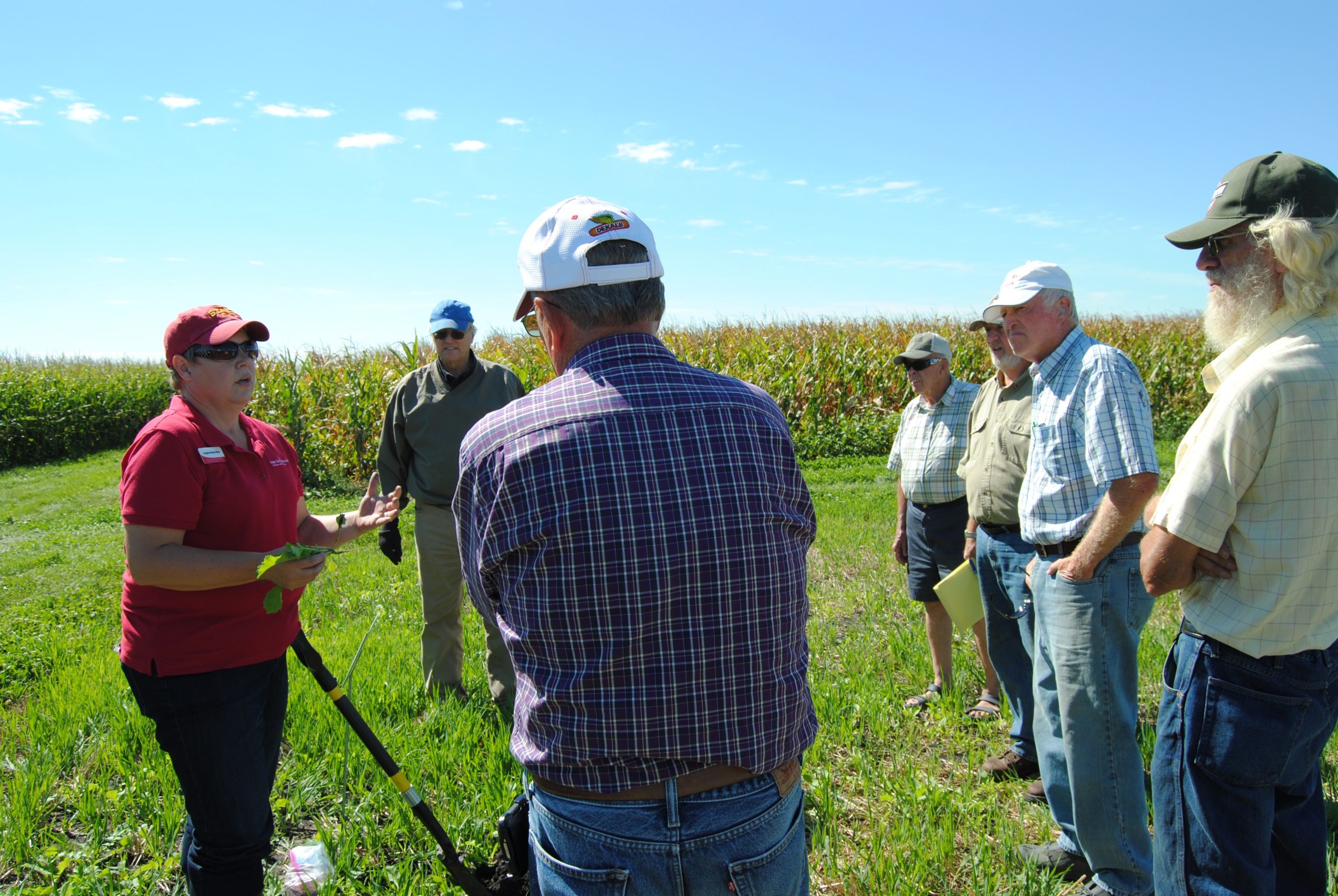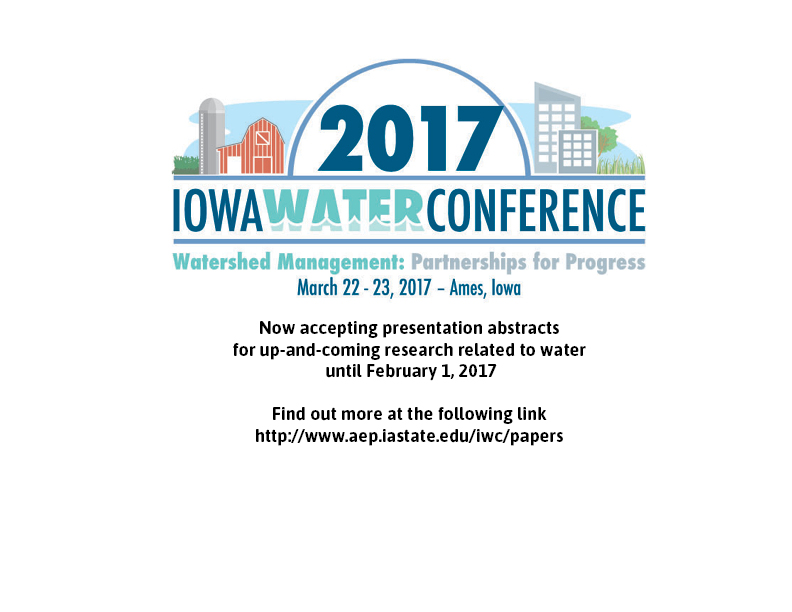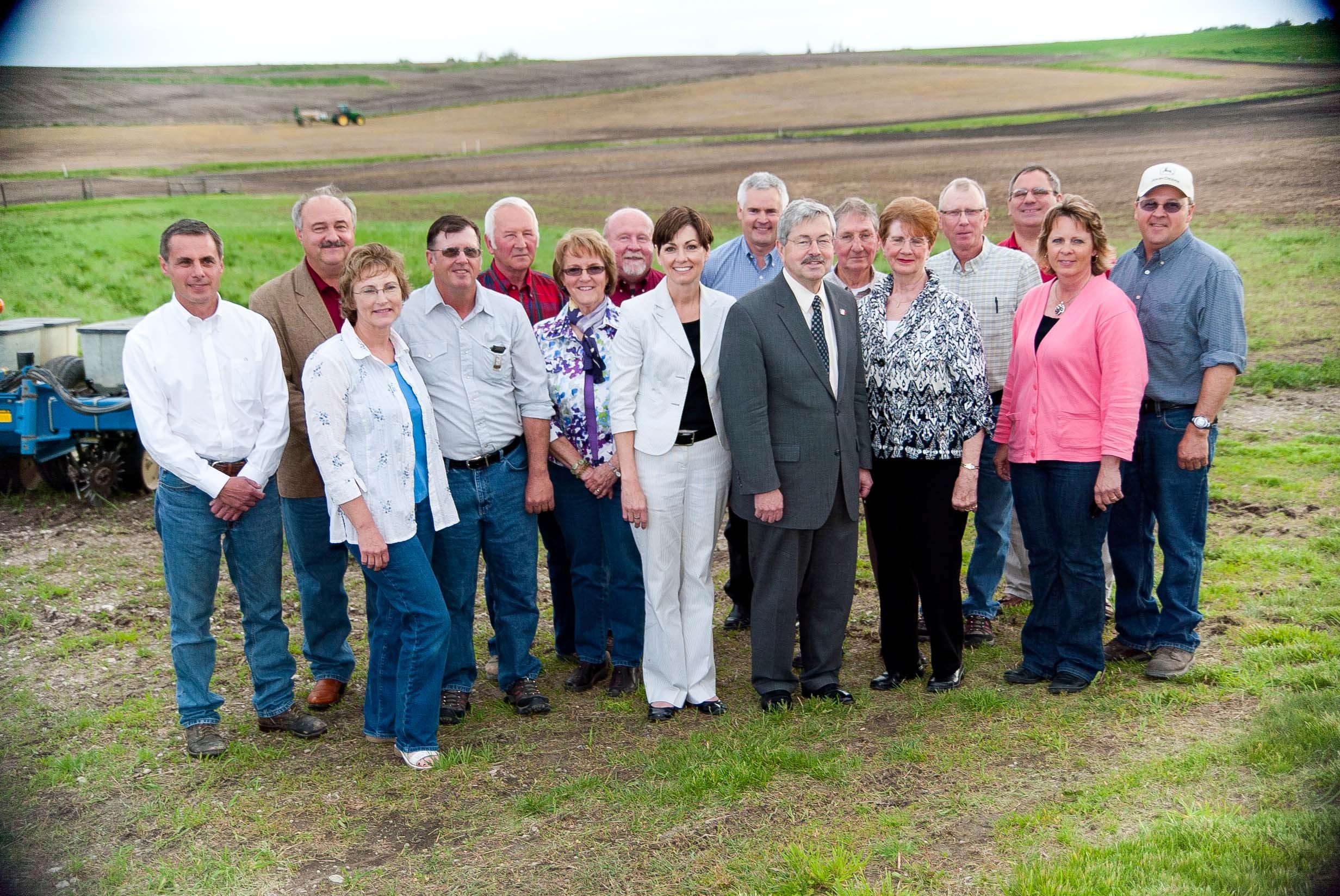This week Dr. Richard Cruse, Professor in Agronomy at Iowa State University and Director of the Iowa Water Center, was invited to speak at the Rendez-vous végétal 2017 in Quebec, Canada. He provided a presentation on the cost of soil erosion and introduced the Daily Erosion Project to an international audience of soil and water professionals.
Continue readingIowa State University Research Farms Utilize Conservation Practices for Science, Stewardship
Iowa State University’s 13 Research and Demonstration Farms around the state have served for decades as models of agricultural and scientific progress for Iowa’s farmers and landowners.
Continue readingMeet the new Science Communications Intern!
Hey, Hi, Hello:
I am the new Science Communications Intern for the Iowa Water Center! I am also the newest contributing author for the Iowa Water Center blog. A lot of new things in my life; however, my interest in water is not new.
Continue readingIntroducing the Iowa Watershed Approach
The Iowa Watershed Approach (IWA) is a new five-year project focused on addressing factors associated with flood disasters in the state of Iowa. The IWA project will also provide benefits of improved water quality by implementing conservation practices outlined in the Iowa Nutrient Reduction Strategy.
Continue readingCurrent Research track now open for the 2017 Iowa Water Conference
The Iowa Water Conference Planning Committee invites researchers from around the state to submit an abstract to present at the 2017 Iowa Water Conference in the Current Research track.
Continue readingGeographic Information Systems at Iowa State University
Big data requires big software and big ideas. This can be especially true when it comes to managing our water-related resources. Today, we have access to numerous data points about our soil and water that can assist in understanding current landscape conditions and to plan for the future. Information such as this is not useful unless it can be analyzed by the experts using software such as Geographic Information Systems (GIS).
Continue readingMonona Demonstrates its Commitment to Water Quality
The permeable parking lot carried a price tag of about $260,000.00. The project would not have been possible without the Water Resource Restoration (Sponsored Projects) Program. The Sponsored Project program allowed Monona to defer a portion of the interest on its sewer project loan, and use those funds for watershed protection practices. The program is a joint effort of the Iowa Department of Natural Resources, the Iowa Finance Authority, and the Iowa Department of Agriculture and Land Stewardship. The permeable roadway project was also supported by the Sponsored Projects program.
Continue readingPeople are asking about the 2017 Iowa Water Conference…
… and we have answers!
Written by Melissa Miller, Associate Director of the Iowa Water Center
It’s that time of year again. Everywhere I go, I get questions about the Iowa Water Conference. Here are a few of the recurring questions:
What’s the theme this year?
Watershed Management: Partnerships for Progress
Is the agenda filled up?
You bet – chock full. We’re going to release it as soon as we’ve fine-tuned the last few details.
Can I still submit abstracts?
We do have ONE track that we’ve left unfilled on purpose. The Current Research track will have an open call this January. We plan for this track to have nine 30-minute spots available. Keep an eye open for that call – it won’t last very long, as we’ve had a lot of interest! If you don’t get selected, we certainly encourage you to submit a poster.
And my favorite question to answer: What’s new for 2017?
Last year is going to be hard to top, but we’re trying. The conference committee carefully considers your comments and evaluations each year and makes little tweaks here and there. Some highlights from 2017 to look forward to:
-The addition of the Iowa Chapter of the American Fisheries Society to the conference. We have several fisheries related talks that will appear in the main conference program, as well as a special track that will serve as their regular spring conference.
-Bringing back the evening reception. We will host a networking social hour on Wednesday evening in Scheman featuring an exhibit titled, “River Stories: Views from a Watershed.” This is a photo exhibit detailing stories created by women farmland owners in the Raccoon and Des Moines River valleys.
-A time for panel presentations. To cap off the first day breakout sessions, we will have a full hour for four concurrent panel presentations to encourage discussion and collaborative thinking.
-Optional workshop: Prairie STRIPS. The STRIPS team is working on developing a two-hour workshop on implementing this beautiful and effective water management practice.
–Spirit of the Water Essay Contest. With thanks to a generous donor, the Iowa Water Center is holding a writing contest for students in the state of Iowa in high school, college, or graduate school. Entries are being accepted through February 1; visit our website for more details.
This is all in addition to the perennial block of excellent plenaries, breakouts, award presentations, photo contest, networking, Scheman sticky buns, posters, exhibitors, and more! Look for the full agenda to be released next week and registration to open in January (we’ll announce the date on social media and email our subscribers).
Get to know the Rathbun Land and Water Alliance
The Rathbun Land and Water Alliance was established in 1997 to promote cooperation between public and private sectors in an effort to protect land and water resources in the Rathbun Lake Watershed. The Rathbun Lake Watershed is located in the six southern Iowa Counties of Appanoose, Clarke, Decatur, Lucas, Monroe, and Wayne and covers 354,000 acres. Rathbun Lake is the primary water source for Rathbun Regional Water Association, which provides drinking water to 80,000 people in southern Iowa and northern Missouri.
Continue readingOut in the Field in the Miller Creek Watershed
Throughout my time in Iowa, I would find myself at a field day or conference looking at a graph showing nitrate levels in water. Before volunteering with the Miller Creek Watershed Project, I saw this kind of graph as a series of data points along an undulating line without a concrete connection to the landscape. I drew conclusions about tillage and other land management practices, about weather, about the planting, growing, and harvest seasons, and how this all relates to water. I did not see how these data points, when taken together, tell a story about what is happening in a watershed.
Continue reading

